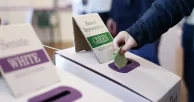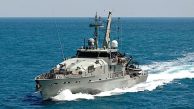
16th October 2024 – 2RAR’s 79th Birthday
ED: From my inbox – Thanks Steve
The origins of 2nd Battalion, Royal Australian Regiment (2 RAR) trace back 79 years to the formation of the 66th Australian Infantry Battalion on 16 October 1945. This unit was part of the 34th Infantry Brigade, and its soldiers were largely volunteers from the 9th Division, who had seen combat in pivotal World War II battles, including Tobruk and El Alamein in North Africa, and in the Southwest Pacific campaigns. The battalion was first established at Labuan, British North Borneo, but soon relocated to the large Australian base at Morotai in the Netherlands East Indies, where it joined the 65th and 67th Battalions. One of the earliest sections to form was the battalion’s band.
In 1946, the battalion was transferred to Japan to serve as part of the British Commonwealth Occupation Force (BCOF) following Japan’s surrender. At this point, the battalion transitioned from being part of the 2nd Australian Imperial Force (AIF) to becoming part of the Interim Army, before being integrated into the Australian Regular Army—the beginnings of Australia’s modern professional army.
On 23 November 1948, the 65th, 66th, and 67th Battalions were redesignated as 1 AR, 2 AR, and 3 AR while still stationed in Japan. This date is celebrated as the Regimental Birthday. Shortly after, 1 AR and 2 AR returned to Australia. By the time 2 AR reached Puckapunyal, Victoria, only around 90 members remained in the battalion, and conditions were austere, with soldiers hunting rabbits to supplement their supplies. On 10 March 1949, the Australian Regiment received the Royal Assent, officially becoming the Royal Australian Regiment (RAR).
A unique aspect of 2 RAR’s history is the origin of its battalion march, “Ringo,” chosen from records brought back from the Occupation in Japan. When the Korean War broke out in 1950, many of 2 RAR’s soldiers were sent to reinforce 3 RAR, which was already deployed. During this time, 2 RAR also took on the vital role of training soldiers for Korea. In 1952, the battalion was aligned with the British Coldstream Guards, adopting their motto, “Nulli Secundus”—Latin for “Second to None,” which remains 2 RAR’s motto today.
As the battalions of the Royal Australian Regiment were formed, their colours were blue, red, and green. 2 RAR’s colour was red, and their flag featured a white “2.” Before the Korean War, 2 RAR informally adopted the colour black as a battalion tradition. Soldiers began wearing black scarves after hours, and black gaiters, while the battalion’s drums—originally red—remained black as a mark of respect after the death of King George VI. During the Korean War, the battalion’s black scarf became official, adorned with red diamonds and a “2” in the centre.
In Korea, 2 RAR distinguished itself in the Battle of “The Hook,” enduring over 4,500 rounds of enemy fire. For its actions, the battalion earned the battle honour “Samichon.” After the war, 2 RAR returned to Australia, being stationed at Enoggera Barracks, Brisbane, Queensland.
In 1955, 2 RAR deployed to Malaya for two years as part of the Malayan Emergency, the only conflict where Australian soldiers’ families were allowed to accompany them on active service. It was during this deployment in 1957 that 2 RAR officially adopted black as its colour. This tradition spread throughout the Australian Army, and now all Second Battalions bear black.
From 1961 to 1963, 2 RAR returned to Malaya, where it adopted the “Silver Soldier” as a symbolic part of the battalion. Upon returning to Australia, the battalion contributed soldiers to form 4 RAR and later helped form 6 RAR. During the Vietnam War, 2 RAR fought two year-long tours, losing its band after the first tour, before relocating to Townsville.
In 1973, 2 RAR was merged with 4 RAR to form 2/4 RAR, remaining linked until 1995. During this time, the battalion deployed troops to Malaysia, Rhodesia, Cambodia, Somalia, and Rwanda. Several enduring traditions originated during this period, such as the bearded sergeant, the Edgar Towner VC Club, and the Pipes and Drums.
Between 1995 and 2017, 2 RAR served as a light infantry battalion within 3 Brigade, deploying personnel on missions to East Timor, Iraq, Solomon Islands, and Afghanistan, among other locations. On 23 November 2017, 2 RAR was redesignated as 2 RAR (Amphib) and became a specialist amphibious battalion. This transformation marked its integration into the Australian Army’s Amphibious Task Force, where it continues to serve as a world-class pre-landing force.
Throughout its storied history, 2 RAR has remained true to its motto, “Second to None,” proudly upholding its heritage and traditions as a key element of the Australian Army.




